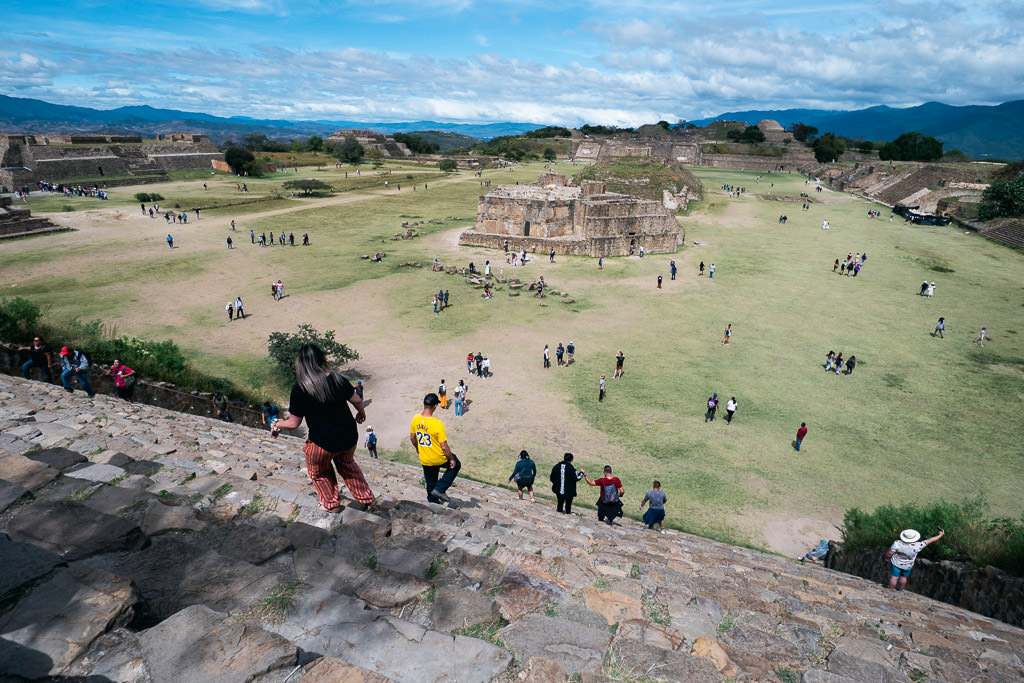
Full of local charm, beautiful architecture, and some truly incredible food, Oaxaca City is a must-visit when in Mexico.
Here you’ll find locals drinking mezcal alongside tourists, cosy plazas abuzz with activity, and an incredible variety of food and smells from markets such as Mercado 20 de Noviembre.
I’ve stayed twice in Oaxaca de Juarez, spending 2 weeks getting to know the city in detail, as well as visiting nearby villages, archeological sites, hiking routes, and more. In this comprehensive Oaxaca travel guide, I’ll share everything you need to know.
Oaxaca (pronounced: wah-hah-kah) has great energy and much to experience, so I recommend staying at least 3 nights if you can.
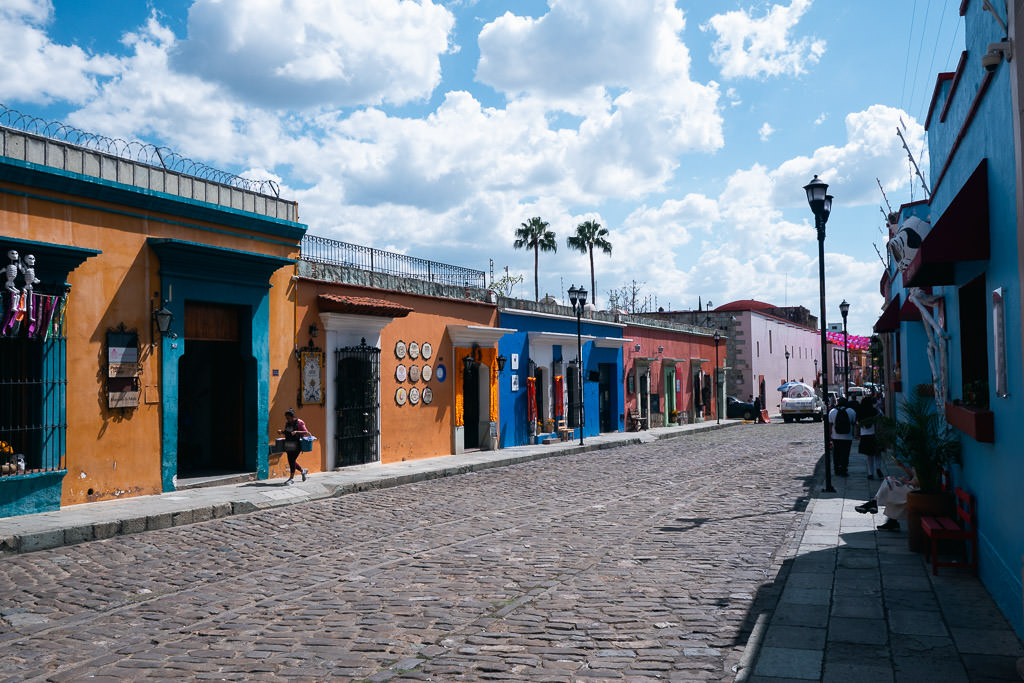


First time in Oaxaca? Here’s a preview
The first thing you will notice is how remarkably well-preserved the historical center is.
It follows a 16th-century grid, with colorful, low-rise buildings dating from the colonial period. The city’s mountainous surroundings, lack of major silver deposits, and more challenging agricultural lands helped it remain relatively untouched during Spanish colonization — all this meant Oaxaca was left more to its own.
Oaxaca has remained more indigenous in character. To this day, there is also much less industry and sprawl in Oaxaca City than in many other Mexican cities, preserving its incredible charm.
Even despite the Spanish conquest, indigenous languages and groups still flourish, and it’s estimated that over 70% of all territories in this region are still predominantly indigenous. The city is rich in local indigenous crafts such as colorful textiles and various handicrafts.
Here’s a taste of what makes Oaxaca special:
Depending on your interests, here are some things to focus on during your trip:
Rich food scene. Oaxaca is regarded by many as the best in all of Mexico. A lot may be owed to its early roots, given this region was also the birthplace of corn (between 7000-10000 years ago!)
Today, we’ll find a range of colorful and tasty dishes, such as the local favorites of Tlayudas, Memelas, and Enmoladas. You can find these in most food stands and markets around the city. But it’s often the famed dish, mole, that most excites foodies coming to Oaxaca. It involves a complex sauce that can have over a dozen different ingredients. Mezcal is also produced a lot in the area, and a visit to a distillery can teach you everything about this drink.
Ancient ruins. While there aren’t as many pre-Hispanic ruins dotted around here (as, for instance, the Yucatan with its many Mayan sites), Monte Albán is an impressive site that sits on top of a mountain and dominates the surrounding plains and Oaxacan highlands. There is also a smaller archaeological site in Mitla.
Old-school charm. Despite being a popular Mexican tourist destination, Oaxaca City maintains an authentic charm and a strong sense of tranquility. It’s a great city for random wandering and enjoying the cobblestone streets lined with mostly low-rise historical architecture.
Vibrant culture. From the street art to textiles and handicrafts, and from the fascinating museums to the renowned Day of the Dead festivities, there is so much life and color in this city.
International vibe. While gentrification is an increasing issue, a positive aspect is that Oaxaca has a vibrant mix of international communities. For instance, with around 15,000 Canadian and American residents, there are many bilingual resources and English-language activities, which can make it an interesting choice for a longer stay or for remote workers wanting a place that’s easy to settle into.
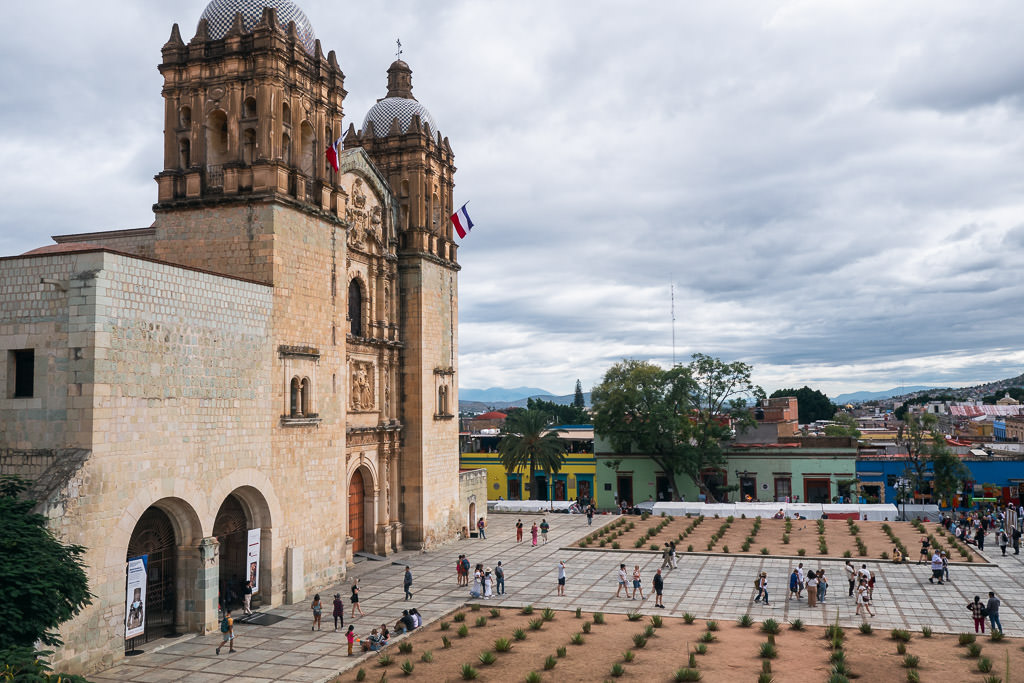
How to see the best of Oaxaca
To get the most out of Oaxaca City, I recommend combining self-guided exploration with one or two guided tours. That way, you’ll get the best of both worlds.
The city is amazingly walkable, and in the following sections, I’ll go deeper into the sightseeing you can easily do yourself. As for tours, I think you can get the most added value from a street food tour (as it will introduce you to tons of amazing dishes and snacks), as well as having a qualified guide at Monte Alban, as this can truly add another dimension to these otherwise lifeless ruins.
However, despite the hype, I don’t recommend the Hierve el Agua petrified waterfall. It’s up to 3 hours driving from the city, it got way overhyped by Instagrammers and influencers, and it’s actually an overcrowded tourist spot these days. There is a lot to see much closer to Oaxaca, so I think of Hierve el Agua as more of an optional add-on if you have time to spare. (Just being honest.)
Important tip: There are plenty of well-reviewed tour companies on sites like GetYourGuide and Viator, but be careful—these platforms often mix Oaxaca State with Oaxaca City. As a result, some recommended tours might actually be 10+ hours away by car. The following three tours are in and around the city and will help you to experience Oaxaca City to the fullest.
Oaxaca FAQs – Know before you go
This FAQ box is your go-to Oaxaca travel toolkit—packed with essentials, local tips, and honest answers from someone who’s been there, done that, and knows what actually matters.
You can see my in-depth tips here on how to get to Oaxaca from Mexico City. But in a nutshell…
Arriving internationally:
Oaxaca has a small airport with some direct international flights (e.g., Dallas, LA). But most international travelers arrive via Mexico City, then continue by bus or domestic flight.
Arriving domestically:
- From Mexico City: 7-hour bus (~$40) with comfortable options like ADO or AU.
- From San Cristóbal de las Casas: 12–15 hours by night bus (~$50).
- From the Oaxacan coast: New roads cut the journey from Puerto Escondido to just 2.5 hours (used to be 10). My detailed info on how to travel between Oaxaca City and the coast.
- Flights: Direct flights to Oaxaca from cities like Mexico City, Cancún, Monterrey, and Guadalajara cost $35–55 (excluding baggage).
While other Mexican cities can be hit or miss when it comes to crime, Oaxaca City is mostly safe to walk around, even if you’re travelling alone. You can explore independently without much worry, though guided tours are still a great way to get more out of your visit.
Your biggest concern will be when exploring inside the markets, as petty theft has been reported. Always keep your phone and wallet in your front pockets, and leave all flashy accessories and valuables back in your accommodation.
If you speak to locals and really pull on some of the threads, you may learn a bit about the influence that cartels have in the city — and locals will have some strong opinions if you press them on the topic. There is more than meets the eye in Oaxaca. However, this is highly ‘behind-the-scenes’ and since tourism is a big money-maker in Oaxaca, it doesn’t affect personal safety for tourists in any way. Consider it local politics.
While you should be aware of the possibility of petty crime, overall Oaxaca is among the safest places you can be in Mexico.
How’s the climate in Oaxaca—and what should I pack?
One of the most important things to remember when heading to Oaxaca City is to bring a wide range of clothes.
Given Mexico is usually perceived to be hot everywhere, many travelers are often caught out shivering when the sun goes down in these highland areas.
Usually, a jumper is enough, although you may want to bring a light coat if heading in winter (or a poncho if visiting in the wet summer months).
During the day you’ll want to wear shorts, light garments and lather up with sunscreen, and especially when heading into the mountains to destinations like Monte Albán and Hierve el Agua.
Is tap water drinkable in Oaxaca?
It is not safe to drink tap water in Oaxaca. Stick only to bottled water and reliable sources.
The BEST time to visit Oaxaca
November to April is the dry season and the overall most popular time to explore Oaxaca.
Oaxaca sits high up in the mountains, which keeps it cooler than most of Mexico. You’ll want a light jacket in the mornings since it can be chilly, but afternoons get pretty warm.
Most days feel comfortable – think pleasant spring weather with temperatures in the mid-60s to low 70s. The hottest it gets is around 87°F, usually in April. It’s the kind of climate where you might start the day in a sweater and end up in a t-shirt by lunch.
Early May to October is the wet season. As you can imagine, rainfall is heavy during this time and can vary between 3-6.5 inches each month.
Although the showers can interrupt outdoor exploring, the wet season is great for getting travel deals on flights and accommodation since it’s a less touristy time to visit.
How many days should you spend in Oaxaca?
3 days is usually enough to explore the city’s main highlights and take a day trip to nearby attractions.
For the Oaxaca completionist, I recommend 5 days. You will be less in a rush, so you can wander around, enjoy activities such as walking tours and market visits, try every mole available, and check out all of the small museums. You’ll also have the opportunity to see more sights in the region or go trekking around the Pueblos Mancommunicados.
How to get around Oaxaca (the taxi colors explained!)
By foot is usually the best way to get around El Centro, since it’s so easily walkable. Sometimes a short taxi ride may be useful.
Due to regulations, there are no Ubers or similar in Oaxaca. The only ride-hailing app that might work is DiDi, though this is from a Chinese company, and I wasn’t able to install it on my European phone. DiDi works only with the local taxis.
Otherwise, you just have to find a taxi the old-school way. There are official taxi ranks dotted around the city, which are safe places to hail one.
There are two kinds of taxis:
- The yellow taxis are for trips anywhere inside the city. They’re usually private taxis.
- The red taxis can take you to nearby towns and villages. The destinations they cover will be displayed on the windshields. They are usually shared taxis (collectivos).
Annoyingly, none of them work with a meter, so you have to either know or guess the prices. My tip is to always suggest an incredibly low price (“it’s 20 pesos, right?”) and let the driver correct you with incredulity, rather than asking it as an open-ended question, which usually invites some ridiculously high price or even an attempt to scam you.
Local buses can also take you to the villages. Many depart from Periferico avenue (e.g., outside Central de Abastos market) or along road 190 north of the center (but don’t look for them at the ADO bus terminal as this is for long-distance coaches only). I’ve done a lot of trips around the valleys using red taxis and buses, but if you’re a tourist on a tight itinerary and/or a lack of Spanish skills, then tours can be a more practical option to see a lot without delays.
Where to stay in Oaxaca
Where I Stayed: Hostal Nordés


I chose Hostal Nordés for budget stay in Oaxaca, and I couldn’t have picked a better spot. It’s very well situated and close to major points without feeling too hectic. I could waslk easily from the hostel to the Zocalo Square, El Mercado 20 de Nov and Benito Juarez, Andador turistico, and Santo Domingo Church. If you’re exploring the city on foot, this is a great place to be based.
The name has ‘hostal’ but it’s not really a hostel, but a budget-friendly hotel. The property is set in a charming colonial building with a nice rooftop terrace and a cozy garden area. I paid just $47 for a standard double room, which felt like great value given how accommodation prices have skyrocketed in Oaxaca in recent years.
Find the BEST RATES HERE
Best neighborhoods to stay in Oaxaca
Looking for a specific place to stay? These are my highest recommendations for places to stay in the state of Oaxaca.
Centro
Once the beating heart of Tenochtitlán—the mighty capital of the Aztec Empire—this area stands out as the historic center of Mexico City, packed with colonial-era buildings, Aztec ruins, and world-class museums (Mexico City actually boasts the most museums in the world—no joke.)
You’ll be just steps away from central spots like the Zócalo (the city’s main plaza), Templo Mayor, and the Palacio de Bellas Artes. You can easily stroll to historic cathedrals, government buildings, and some of Mexico’s best museums.
It’s definitely busier and more hectic than neighborhoods like Roma or Condesa, with heavier traffic and bigger crowds. That’s why I usually recommend booking your stay in neighborhoods like Roma or Condesa and saving a full day to visit Centro. But if you don’t mind being right where the action is, Centro Histórico can be a great home base too!
 A street preview seen from Roma neighborhood…
A street preview seen from Roma neighborhood… 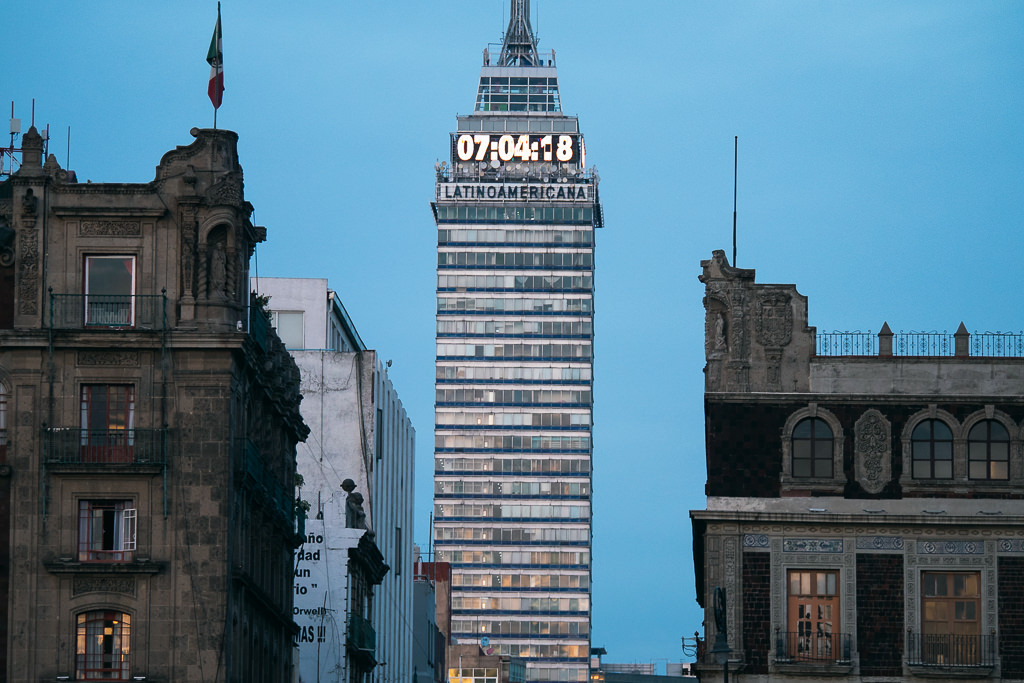 Get your bearings with a panoramic view from Torre Latinoamericana.
Get your bearings with a panoramic view from Torre Latinoamericana.
Reforma
Just north of Centro lies the Reforma neighborhood, known for its international dining and boutiques, though little in the way of sights. This place has a more modern and residential feel, but it kinda lacks the charm and vibrant character found in other parts of Oaxaca. It’s also a bit removed from the city’s main attractions, but easily reachable by ride-sharing services.
Most visitors to Oaxaca stick to Centro for dining, but locals increasingly head to Reforma when they want to try something new. The area has found its rhythm over the past few years – walking a single block, you might pass a Japanese ramen shop, a French bakery, or a traditional mezcalerías.
What’s interesting is how naturally this mix has developed. It’s not a planned “international district” but rather the organic result of different communities settling in the same area.
Jalatlaco & Xochimilco
Jalatlaco and Xochimilco are two traditional barrios in Oaxaca City, known for their cozy coffee shops and vibrant street art. They are located on opposite sides of the Centro Histórico—Jalatlaco to the east and Xochimilco to the northwest—yet both border the city center and are easily accessible on foot through the downtown streets.
Jalatlaco is a historic colonial district, and even without its murals, it would still be a colorful place, with most of its buildings painted in vibrant hues.
Xochimilco offers a quieter experience as one of Oaxaca’s oldest neighborhoods, featuring large-scale murals and striking street art. It tends to be much calmer than Centro, with minimal traffic and a more residential atmosphere.
Jalatlaco is trendier than Xochimilco, with beautiful, hilly streets and a great mix of traditional dining and hipster cafés. Overall, you’ll love staying in either of these neighborhoods.
 Jalatlaco is one the funkiest neighborhood in Oaxaca
Jalatlaco is one the funkiest neighborhood in Oaxaca 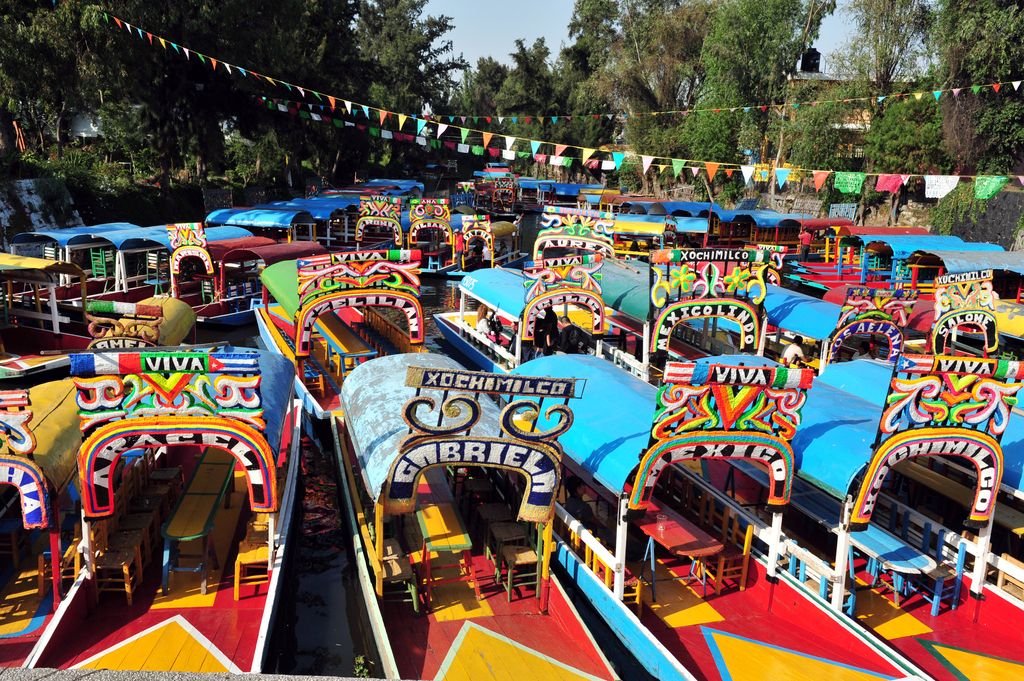 The fun side of Xochimilco
The fun side of Xochimilco
What to do inside Oaxaca City
Oaxaca City is a full-on cultural explosion, so the more time you have to wander around and make your own discoveries, the better!
As a bit of a self-guided walking tour, I suggest hitting up the following sights. Central Oaxaca is highly walkable, so it’s not difficult to get around. Taxis or buses are only really necessary for the sights further outside of the city, which are covered in the next section.
If you spread them out a bit, these things to do can easily fill up 2 days of exploration. It can be more if you like to take it easy or get very browsy in the shops, markets, or galleries.
1. Start with a slow stroll through Oaxaca’s historic center
Oaxaca has such a delightful historical center. The streets are lined almost solely with low-rise colonial-era architecture, with very few signs of modern construction.
Understanding Oaxaca’s history and uniqueness on a walking tour will help you appreciate the city all the more.
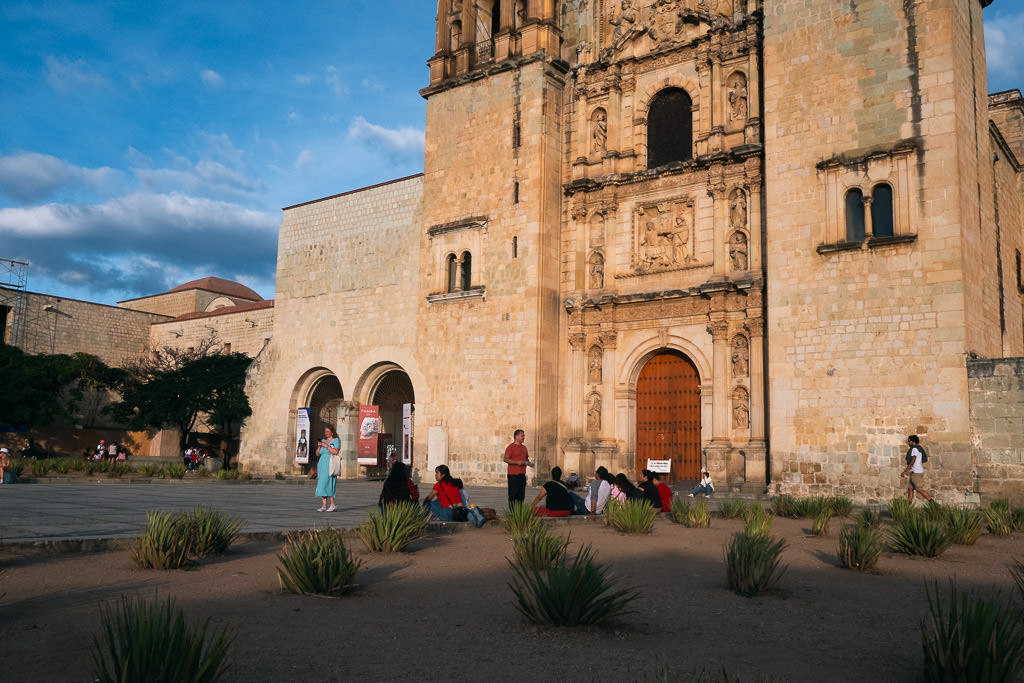
Oaxaca by Locals does a great free walking tour around the city, where they’ll show you top sights and some more local gems. (Rather than being exactly free, these tours are donation-based. They are also usually with a large group.)
If you prefer a more private tour, then you can join this organized walking tour. Your professional guide will lead you through many of the top city sites.
Otherwise, simply soak in the atmosphere and start with a look around the area around the Templo de Santo Domingo de Guzmán.
Book this guided walking tour
2. Explore the Templo de Santo Domingo
This beautiful Baroque church took over 150 years to complete, with construction finishing in 1724, when the Dominican Order first used it.
Be sure to step inside to see its gold leaf ornaments and elaborate altar, which are often said to be among the most impressive in all of Mexico.
The church also has an interesting history, having been used as a base by the Insurgent Army and various Centralist groups during the Mexican War of Independence.
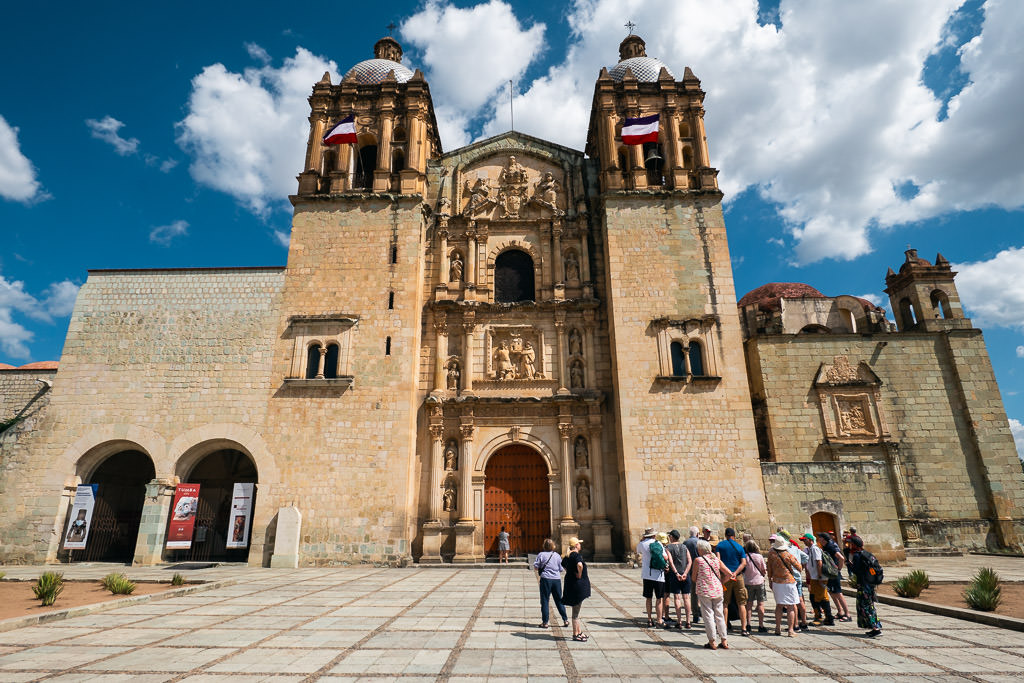
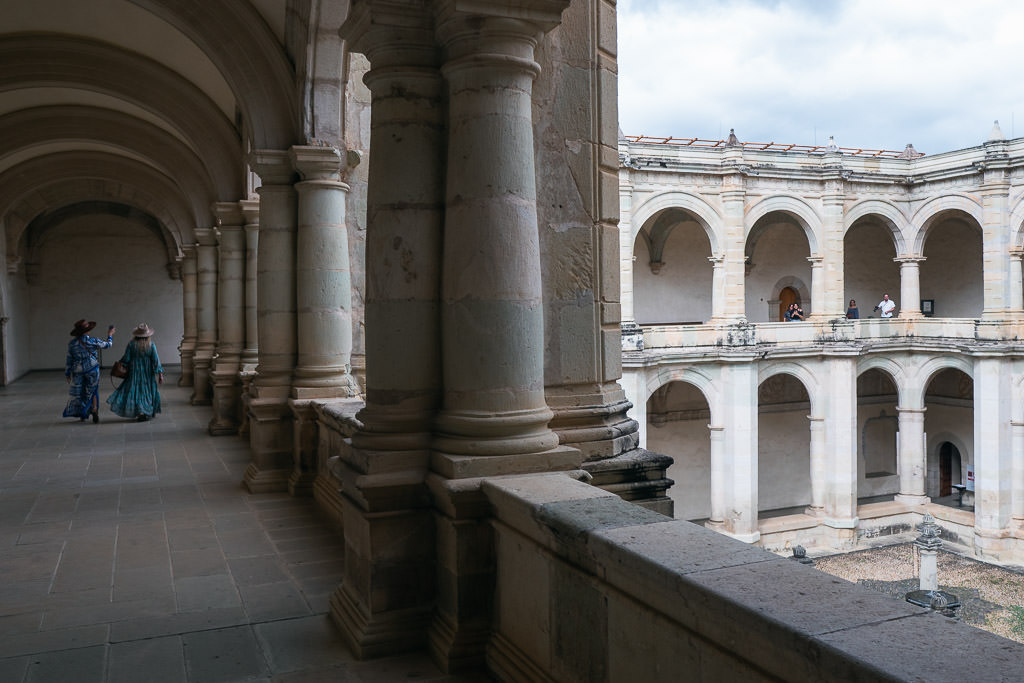
The section that was once the convent nowadays houses the Museum of Cultures, which houses many displays on the pre-Hispanic as well as contemporary cultures of Oaxaca state, including various ancient Zapotec artefacts (many of which were unearthed at Monte Albán).
It’s worth spending an hour or so visiting the museum. The unusually limited opening hours listed on Google Maps are incorrect, by the way; it’s open daily from 10:00 to 17:30, closing 2 hours earlier only on Sundays.
3. Ethnobotanical Gardens
Located right next to the Templo de Santo Domingo, the Jardín Etnobotánico de Oaxaca is full of rare plants found all over the state.
The biggest highlight is the impressive cactus garden, which features some perfect rows of tall cacti standing hedge-like beside the paths, making it a very popular selfie spot!
You can see the Botanical Gardens only on a guided walk, which is very insightful and takes under an hour. You can join a group at the entrance.
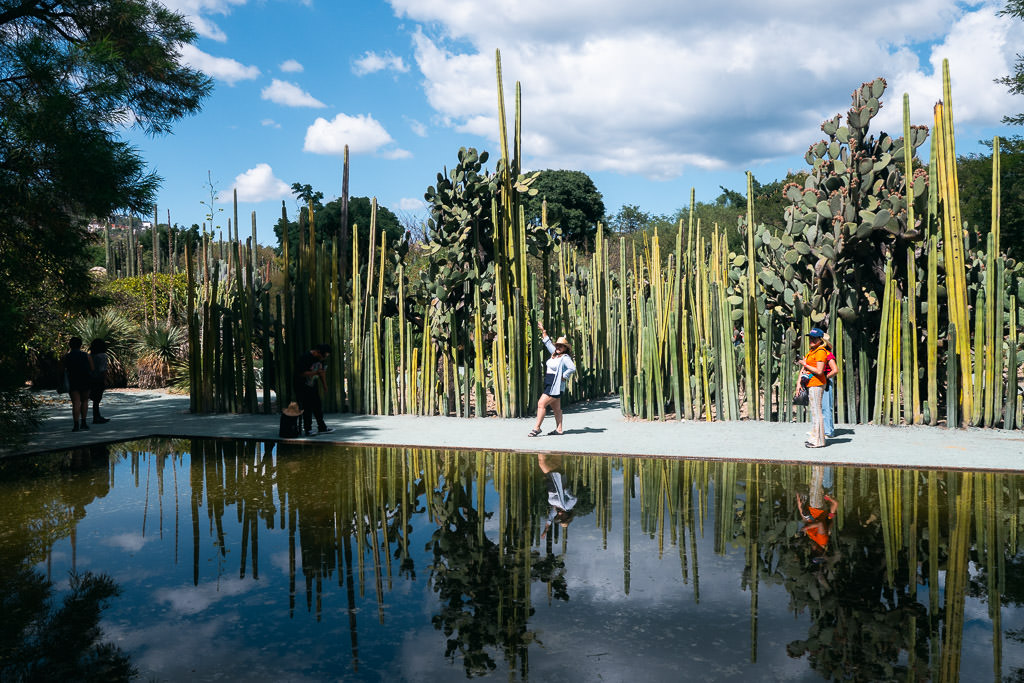
Next, walk south towards the Zócalo, or main square. This main plaza is known for its charming fountains, green spaces, and old colonial buildings. Here we’ll also find the imposing Metropolitan Cathedral of Oaxaca, which is well-known for its giant twin towers and baroque facade.
Walk down the Andador Turístico (Calle Macedonio Alcalá), lined with craft markets, street art, and great photo spots.
4. Lunch: try Oaxaca’s Street Food
It’s time to dive into the food culture!
Oaxaca is regularly crowned the ‘cuisine capital’ of Mexico. One of the best ways to get to know the local food culture is to head to its two fantastic markets, where you can grab an authentic lunch. This is where many locals eat — simple, casual, but oh so tasty.
Mercado Benito Juárez is the first market, which is known for its large selection of fresh produce and handicrafts, plus a few food vendors as well.
Mercado 20 de Noviembre, just across the street, is best for foodies thanks to its endless food stalls and artisan vendors.
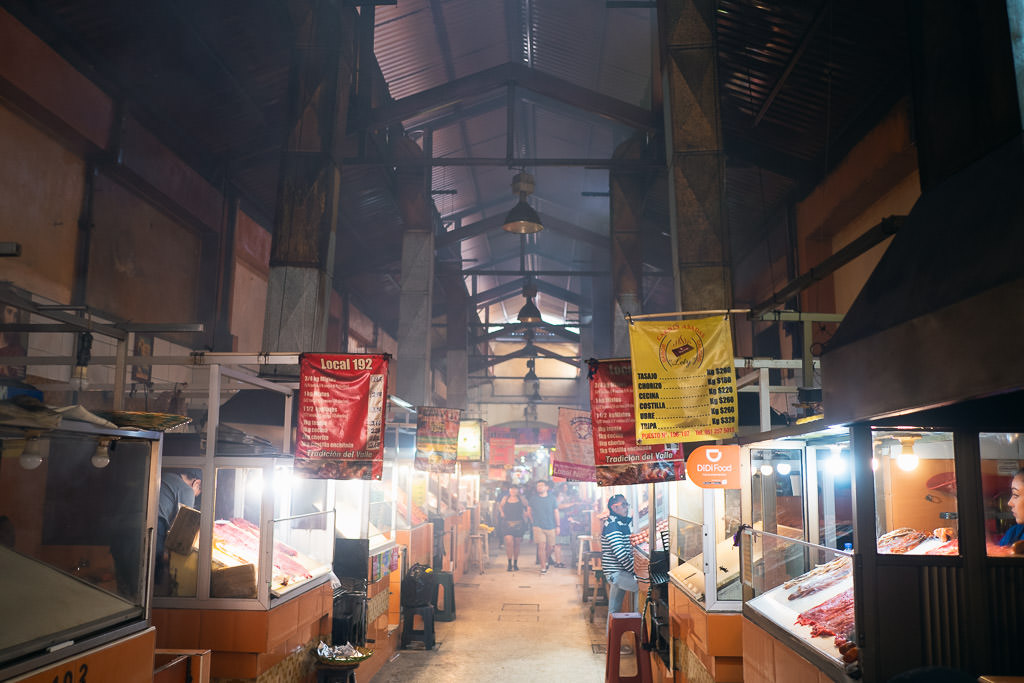

You enter the 20 de Noviembre market through the Pasillo de Humo (alley of smoke), named so because of the numerous BBQ stalls here creating a thick smoke-filled air.
It’s the perfect place to try authentic Oaxacan dishes such as Tlayudas (which look vaguely like pizzas and are layered with meat, avocado, and cheese). Others worth sampling include Quesillo and Tamales.
While you are here… try a local snack!
Feeling adventurous? Then try some Chapulines (fried grasshoppers).
This suggestion will inspire either curiosity or revulsion in some, but they are surprisingly snackable, often seasoned with some salt, lime, or chili powder.
 Try Chapulines.. and you’ll vow never to eat a bug again…
Try Chapulines.. and you’ll vow never to eat a bug again…
Led by a local bilingual guide, this night walk takes you around the corners of Oaxaca street markets and offers a real look at how Oaxacans eat. Hotel pickup and drop-off included—just come hungry.
book for $47 on getyourguide
5. Discover the art of traditional textile-making
Have a look around the Zocalo and optionally take a peek inside the Oaxaca Cathedral. Next, head a couple of streets east towards the Textile Museum.
If you ever walk past an Oaxacan market or souvenir shop, then there’s a good chance you’ll spot various colorful, embroidered blankets and ponchos hanging from above.
Many of these are handmade with traditional practices using looms. Fabrics are woven using wool from animals such as Alpaca, Sheep, and Vicuña, each with their own particular texture and feel.
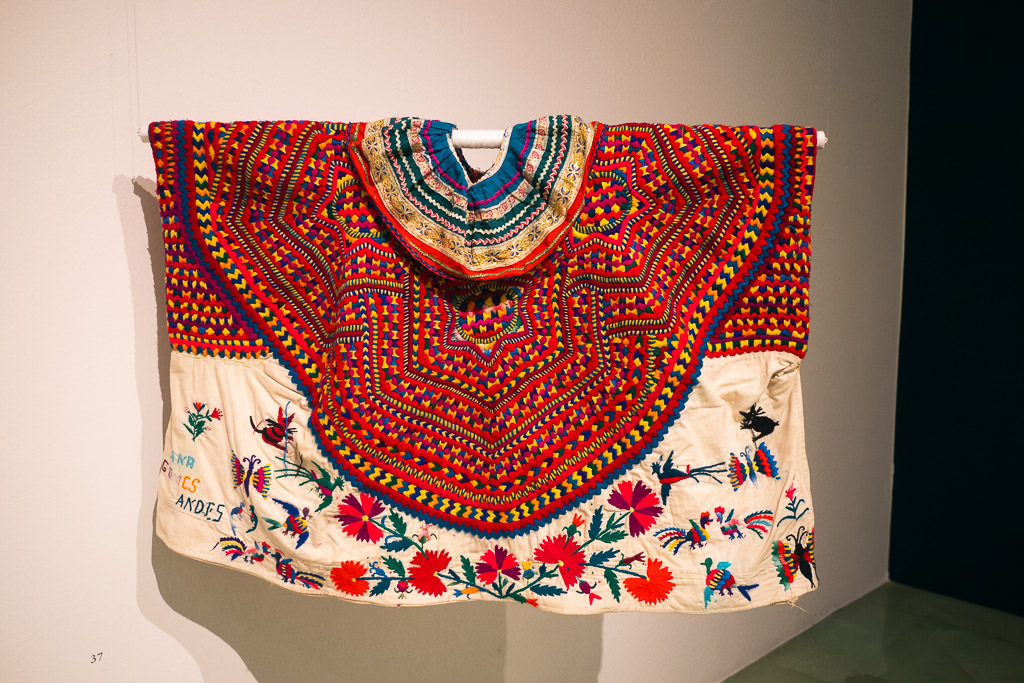
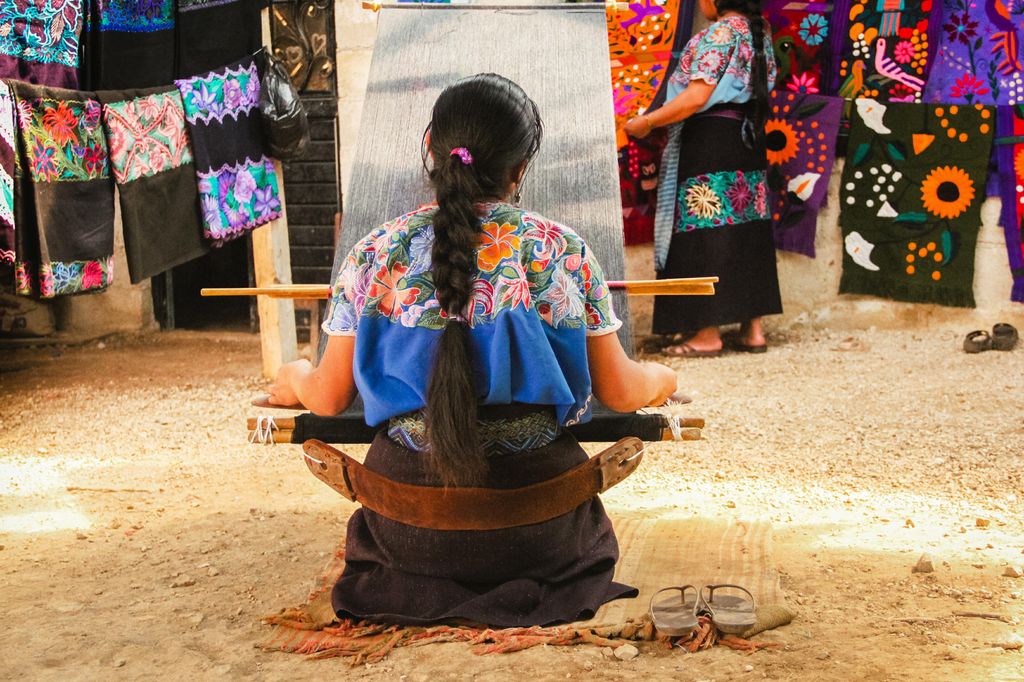
You can get a wonderful impression of the indigenous textile crafts by visiting the Textile Museum of Oaxaca. It’s a small museum, but entry is free, and being located close to the main square, it’s easy to pop by. Some beautiful handicrafts are on display.
You can also go straight to the source for traditional Zapotec textiles. The village of Teotitlán del Valle, about a 40-minute drive east of Oaxaca, is one of the best locations to go as it’s where many textiles are produced. Details for how to get there can be found here. If you ever wanted to buy a colorful artisanal Oaxacan rug, here is your chance!
Next, head west towards the Plaza de la Danza, on the edge of the old center.
6. Visit the Basilica of Our Lady of Solitude
Located a few blocks west of the main square, this 17th-century church is another one of Oaxaca’s key landmarks. Dedicated to the patron saint of Oaxaca, it is notable for its intricately carved baroque-style entrance, but also its ornate decor.
Heading here provides an excuse to watch local life unfold on the square outside, as well as to try a local treat!
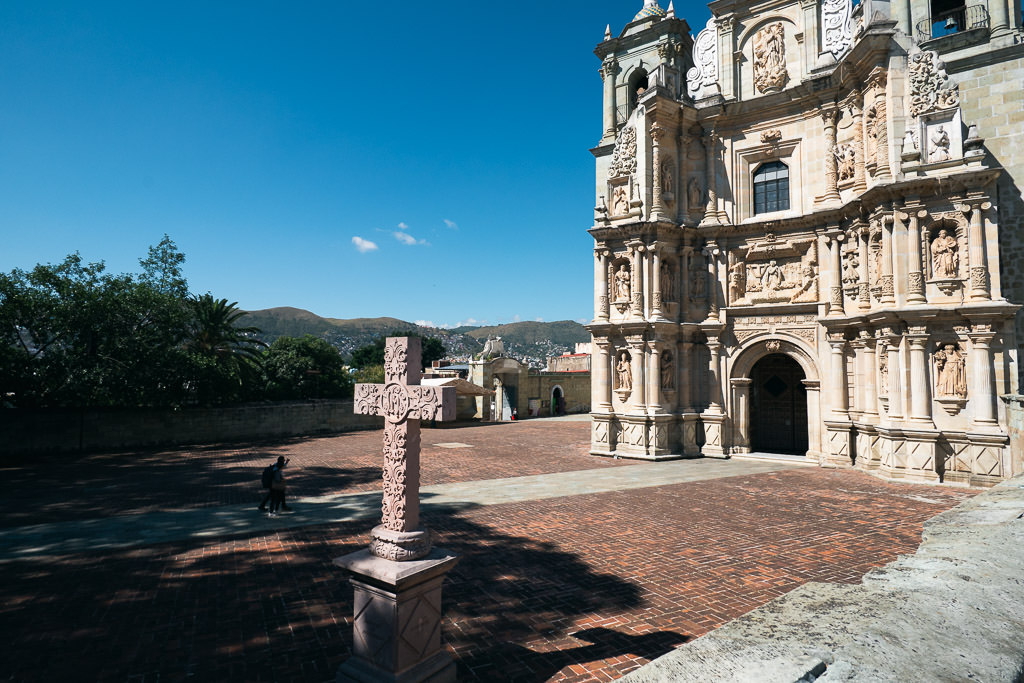
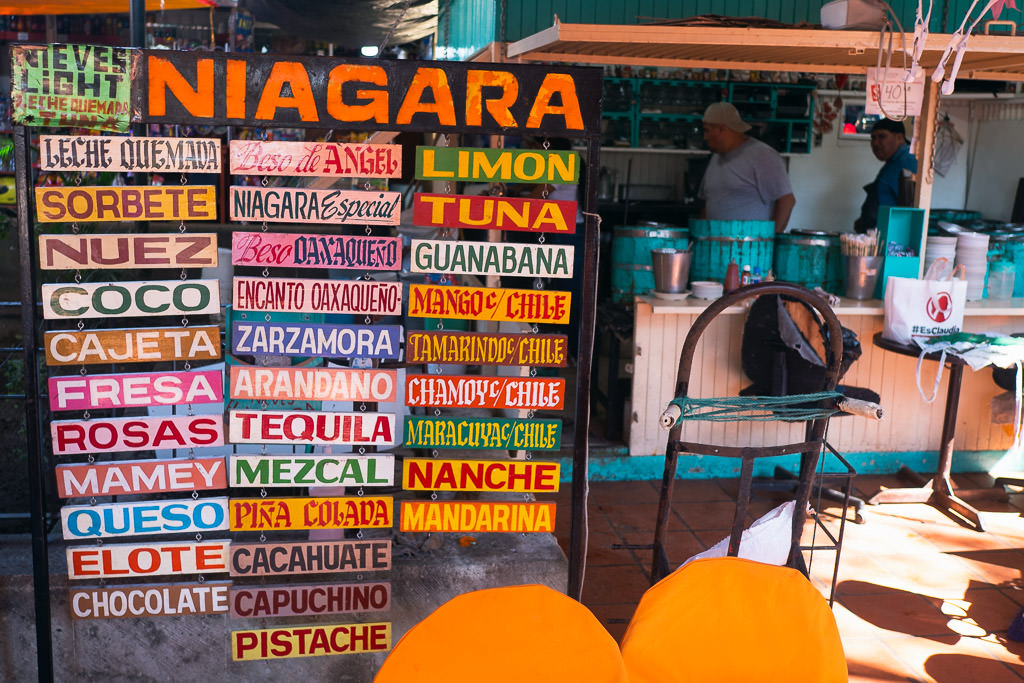
Stop by the plaza in front of the church, where you’ll find a concentrated cluster of stalls selling Nieves, a local type of ice cream. The dozens of flavors include many tropical fruits, but also some unexpected ones — like cream cheese, burnt milk, mezcal, and tuna (no, not fish, it’s Spanish for prickly pear!).
7. Get lost in colorful Jalatlaco
After exploring Centro, I suggest hitting up this funky neighborhood. It’s filled with fun shops and stunning wall art. It’s one of my favorite areas to grab a drink or a meal.
Located just a few blocks east of the main zócalo, the neighborhood of Jalatlaco is bursting with colorful street art, making it feel like a kind of open-air museum. This is definitely my favorite area to explore in Oaxaca!
Start in Calle Aldama and then wander your way through the nearby cobblestone streets.
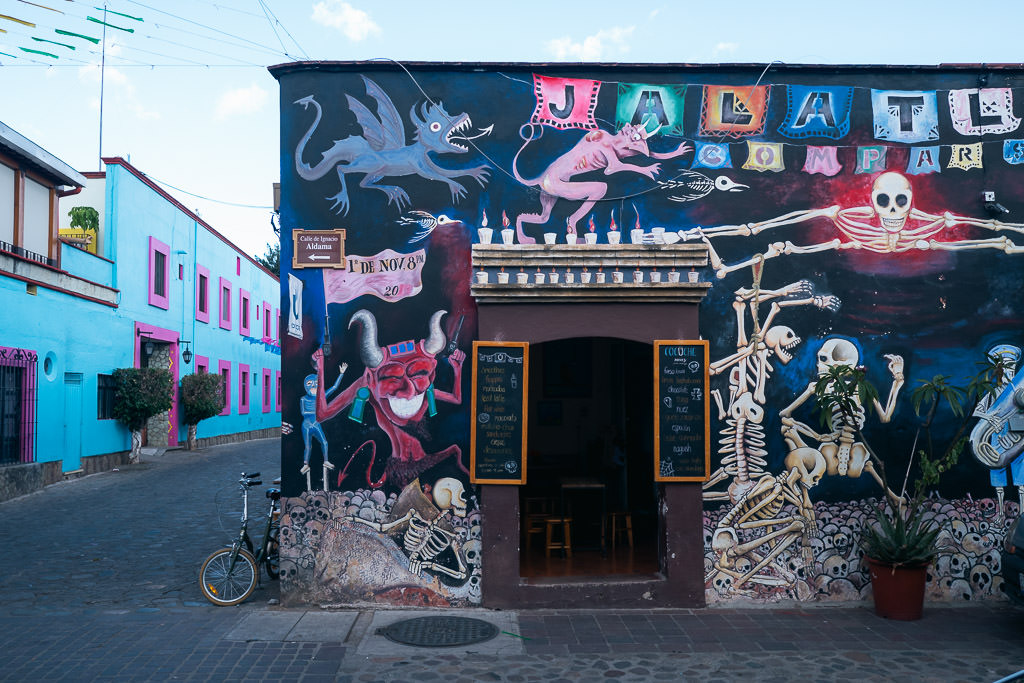


Some of the historical buildings have been converted into cute cafes where you can enjoy a late breakfast (Mujer de Café is a nice stop, as is Jalatlaco cafe), as well as various organic and artisanal shops.
The area is bursting with fun, funky cafes, boutique shops, and other smaller delights. It’s a riot of color any time of year, but it’s even more vibrant during Day of the Dead, when the residents here make an especially impressive effort with their decorations.
Jalatlaco was once an ancient Zapotec town (before the arrival of the Spanish), so you can find numerous murals dedicated to this past civilization.
8. Dinner: try the moles!
The iconic dish of Oaxaca is mole, a rich sauce that may be made with over 20 different ingredients, including chili peppers, nuts, seeds, and chocolate.
Mole can be found in many variations throughout the city, each with its own unique flavor profile. The most common variety is mole negro (black mole), which has a faintly bitter chocolate-like flavor. It is traditionally served over chicken, but can also be enjoyed with pork or beef.
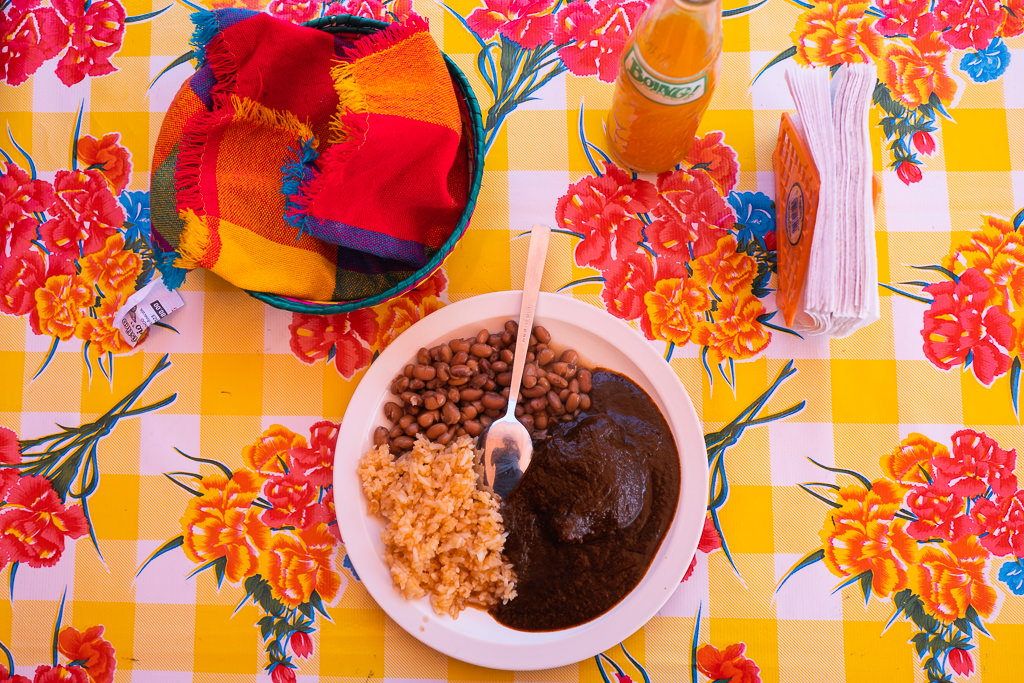 A plate of Mole Negro
A plate of Mole Negro
However, at least six other types of mole are popular in Oaxaca, including rojo, coloradito, amarillo, verde, chichilo, and manchamantel. It’s not difficult to find. If you’re on a budget, go to Mercado 20 de Noviembre, where you’ll find mole on the menu a lot.
If you prefer a restaurant, there are many places you could go, but I much enjoyed having several of my meals at La Casa del Tío Güero, which has good mole at good prices, and has a nice roof terrace as well.
9. Join a traditional cooking class
Another way to get into Oaxaca’s gastronomy is by trying your hand at cooking yourself!
This traditional cooking class is the perfect way to dive deeper into the local culinary culture, where you’ll be taught by an experienced chef how to make your very own Oaxacan dishes.
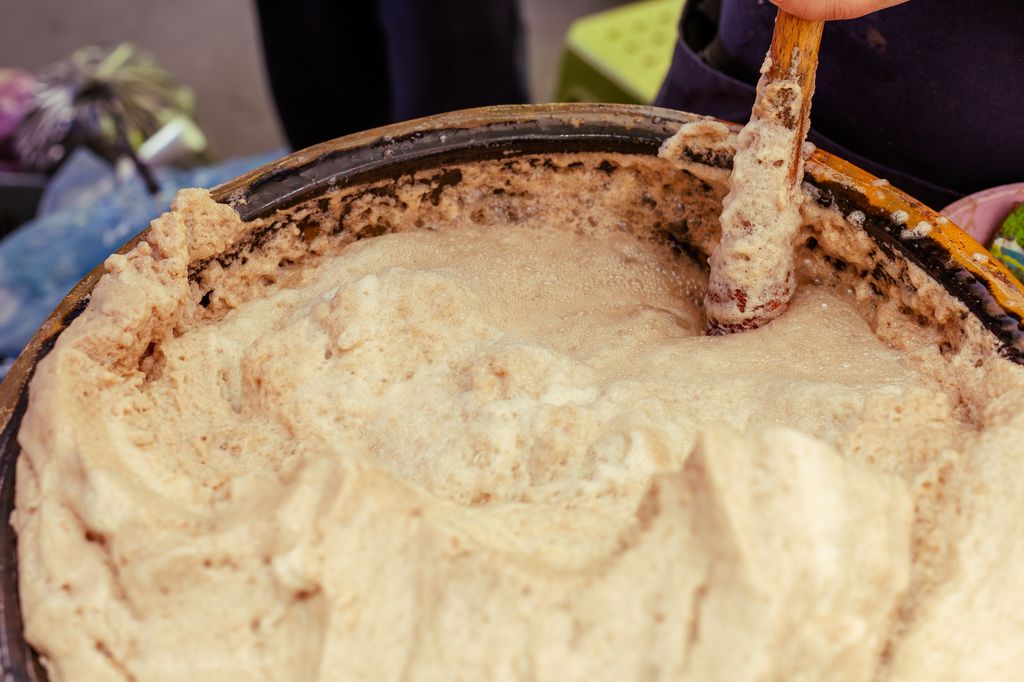 Making tejate
Making tejate
You’ll first head to a local food market to learn about the history of the different ingredients, where you’ll also pick up everything you’ll need for later on.
In the workshop, you’ll then be shown step-by-step how to make various classics, as well as your own tortillas and Oaxacan drinks (such as Tejate and Chilacayota).
book this class & Cook Oaxacan Classics
10. Central de Abastos de Oaxaca
I’ve already mentioned two markets adjacent to the tourist walking street, but if you want to dive into a truly local market, then you must wander around the sprawling Central de Abastos on the far southwest edge of El Centro.
Devoid of any souvenir stands, this is more of a wholesale food market where locals come to do their weekly shopping. It’s colorful, full of life, and potentially a little overwhelming. It seems like the sort of place where pickpocketers might lurk, so watch your belongings.
While you’re maybe less likely to buy something here, if you want to observe the street life in Oaxaca then this is a wonderful area to get lost in.
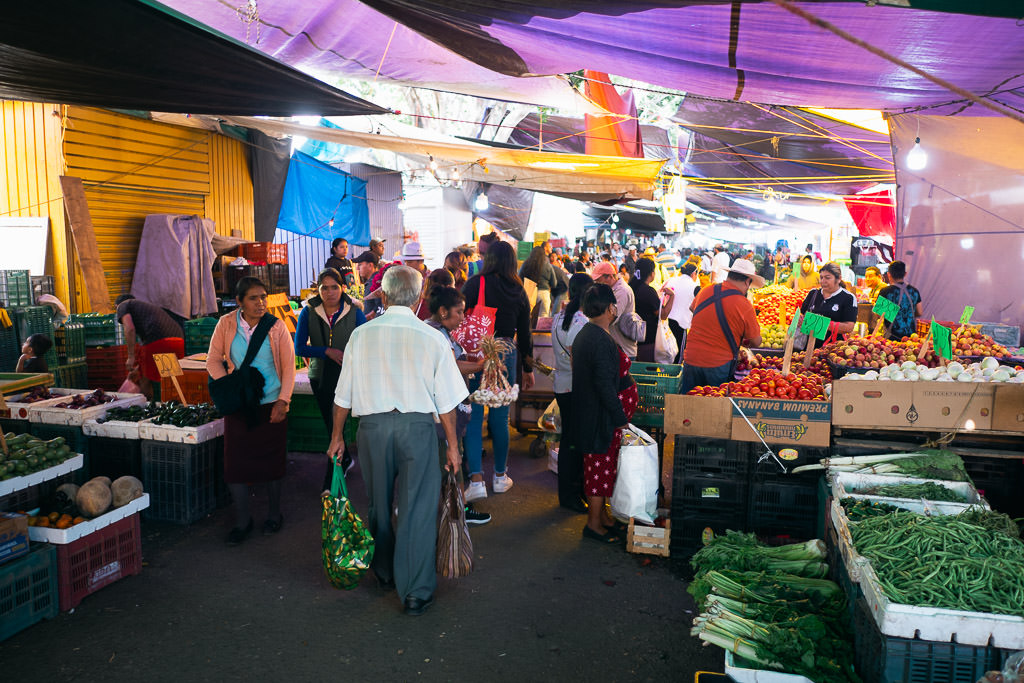 Central de Abastos
Central de Abastos
11. Sip on the local spirit at a Mezcalería
While Mezcal is slowly gaining popularity, it remains the lesser-known spirit when compared with its bigger brother, Tequila.
The strongest of the two, Mezcal, is made from the same agave plant and first originated here in Oaxaca (while popular all over Mexico, over two-thirds of Mezcal is produced in the state).
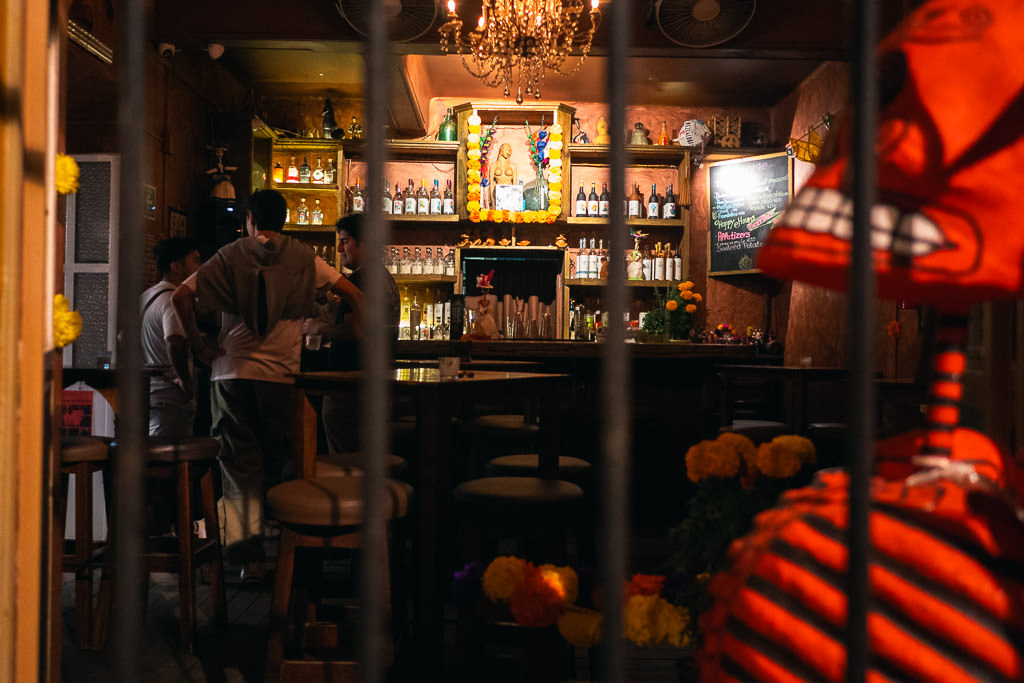
This spirit really is the social glue of the city, and in the local mezcalerías, you’ll find locals sitting side-by-side pounding these back – even along with the occasional tourist or two!
I highly recommend visiting one of these bars at least once, where you can not only have a memorable night out but also get to try various styles and authentic Mezcal concoctions.
Even better, you can visit one of the local Mezcal distilleries to try this legendary spirit straight from the source.
What to do around Oaxaca
Dotted around Oaxaca are a number of popular tourist sites, including Monte Albán and the ‘petrified waterfall’ of Hierve el Agua, which went a bit viral online in recent years. Of these, I would consider Monte Albán the one absolute must-visit.
Beyond the well-known experiences and day trips, the valleys around Oaxaca hide many authentic villages and natural areas that can meaningfully broaden your Oaxaca experience. If you’re looking for a more local perspective, I highly recommend visiting the town of Tlacolula or going hiking around the Joint Villages (Pueblos Mancommunicados).
Important tip: Sundays are market days in nearby villages like Tlacolula—go early, go hungry, and bring cash. It’s one of the most authentic cultural experiences you can have here.
Is Hierve el Agua overrated?
Hierve el Agua is a petrified ‘waterfall’ of calcium deposits seemingly frozen over the edge of a cliff in the Oaxacan mountains.
I must be honest: I think it’s a tourist trap that can be critically overtouristed at times. Its natural infinity pool became a huge hit on Instagram, which quickly led to overcrowding. I do still list it here, but with some reservations.
Admittedly, the natural formation is absolutely beautiful in an objective sense, and you get some great views of the surrounding valley. Hierve el Agua can still be worth it if you tackle it early enough and combine it with some other sights.
Hierve el Agua takes about 2,5 hours to get to one way. By midday, it gets very crowded with group tours. That’s why I recommend taking this tour that leaves at 7 a.m. (other tours are at 9 AM or later). I know, it’s not an ideal departure time for your holiday. But as they say, the early bird catches the worm.
You’ll definitely beat the crowds and see Hierve el Agua in its true splendor, then visit a local market, a weaving workshop, and the legendary Tule Tree.
Book this top-rated tour on Viator
Monte Albán’s ancient pyramids
By far the most popular day trip you can take from Oaxaca City, the ruins of Monte Albán offer us a glimpse into the pre-Hispanic world of Southern Mexico.
Built in 600 B.C., the once-flourishing city has been conquered and ruled by several civilizations, including the Zapotecs, Olmecs, and Mixtecs.
The structures are very impressive in their own right, but are also known for their formidable positioning on top of a hill, from which you get some incredible views over the surrounding Oaxaca valleys.


You can reach Monte Albán independently (it’s an hour’s drive from the city), but I highly suggest going with this day tour from Oaxaca City.
It will include pick-up and drop-off from your hotel and a professional guide who can provide useful insights, which will make up for the complete lack of information signs at the site.
book on Viator
El Árbol del Tule – The stoutest tree in the world
About 20 minutes west of Oaxaca is the village of Tule, which is home to one of the most remarkable trees. Located on the church grounds in the town center, it is thought to be the stoutest (i.e., widest) tree in the world, even beating the giant sequoias that dominate the list.
It is thought to be between 1,200 and 3,000 years old, likely having been around during the time of the Aztecs, with local legend saying it was planted by an Aztec priest.

To say it’s an impressive organism is an understatement. It’s beautiful in a way hard to capture in images. I loved sitting on one of the park benches and contemplating the sheer age and size of this ancient Montezuma cypress. If you’re the kind of person who can look at a tree and drift off into deep thought, you will enjoy it for sure.
The Tree of Tule is included in various day trip tours (like this Oaxacan journey on Vitor), but you can also visit independently. If you don’t mind sharing a ride, then grab a red and white collectivo taxi with a sign for Tule, Tlacolula, or Mitla (all go in the same direction).
It costs 20 pesos to access the little park around it. A food court and some gardens nearby offer some reason to linger after admiring the tree.
Tlacolula Sunday market
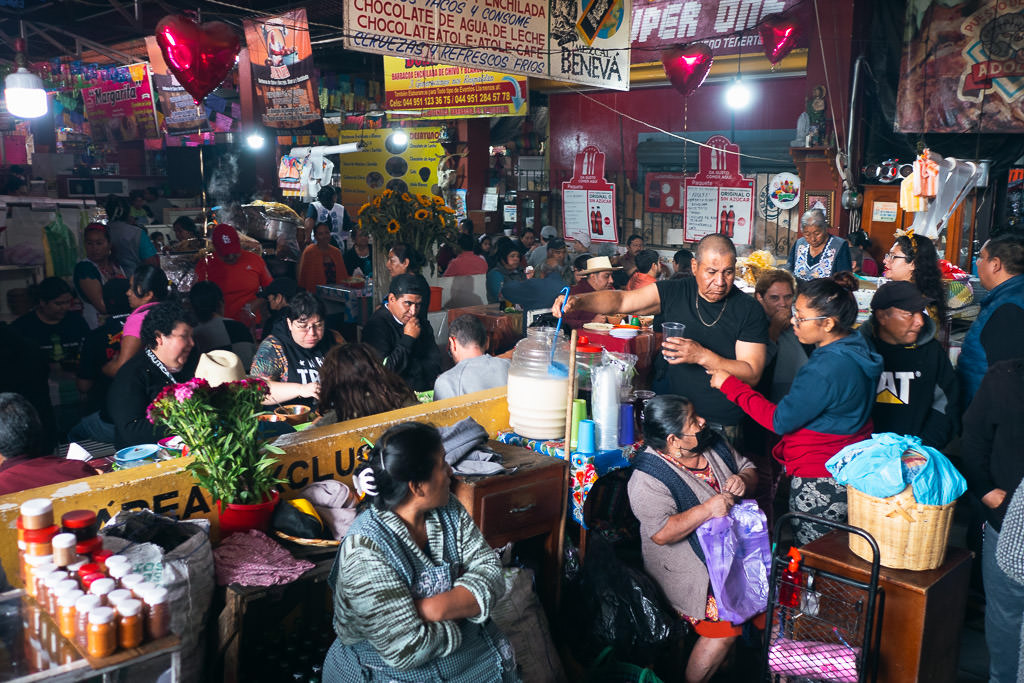


If you’re in Oaxaca on a Sunday and you love people-watching and seeing some local life, you should definitely go to the nearby town of Tlacolula.
At this huge street market, people from villages all over the mountains come to sell and buy their groceries and other wares. You’ll see a lot of indigenous people wearing brightly colored clothes, carrying live poultry on their feet, and other typical scenes. There is a large food hall where lots of people enjoy a kind of BBQ.
It’s not really a tourist attraction as such, but the market is sure to give you sensory overload with its explosion of languages, colors, and aromas. This blog has all the details on how to get there.
(Always be aware of the possibility of pickpocketing at busy markets and keep your valuables hidden.)
The Pueblos Mancomunicados hiking trails
In the mountains northeast of Oaxaca, a cluster of indigenous villages decided to band together to allow sustainable ecotourism to take place in their area.
These Pueblos Mancomunicados (‘joint villages’) created a network of hiking trails sprinkled with mountain lodges, pedestrian suspension bridges, and even some ziplines, inviting you to explore and enjoy nature.
The air is cooler up in the mountains and also a lot fresher than in the city. It’s a hidden gem, away from the typical tourist route, letting you get a true taste of rural Oaxaca.



An official office in Oaxaca City can provide you with more information, as well as multi-day treks with guides who can tell you about the ecology and local customs. Companies like Coyote Adventures and Tierraventura also offer tours ranging from 1 to 6 days.
However, it’s also possible to go independently, at least if you want to go for a shorter route. For instance, you can get a taxi to take you to the village of Benito Juarez and take a day hike to Cuajimoloyas, from where you can get a pickup truck back to the city via Tlacolula.
(Although the path is quite obvious, there aren’t always signs, so I highly recommend asking locals about the exact trailhead and using an app like MAPS.me to navigate.)
The Sierra Norte is home to beautiful pine-oak forests dotted with giant agave plants and overgrown with countless bromeliads and ferns.
I thought these forests would not be as ‘exotic’ to me as the tropical jungles further south in Mexico… at least until I hiked through them and found myself utterly marvelling at the nature around me.
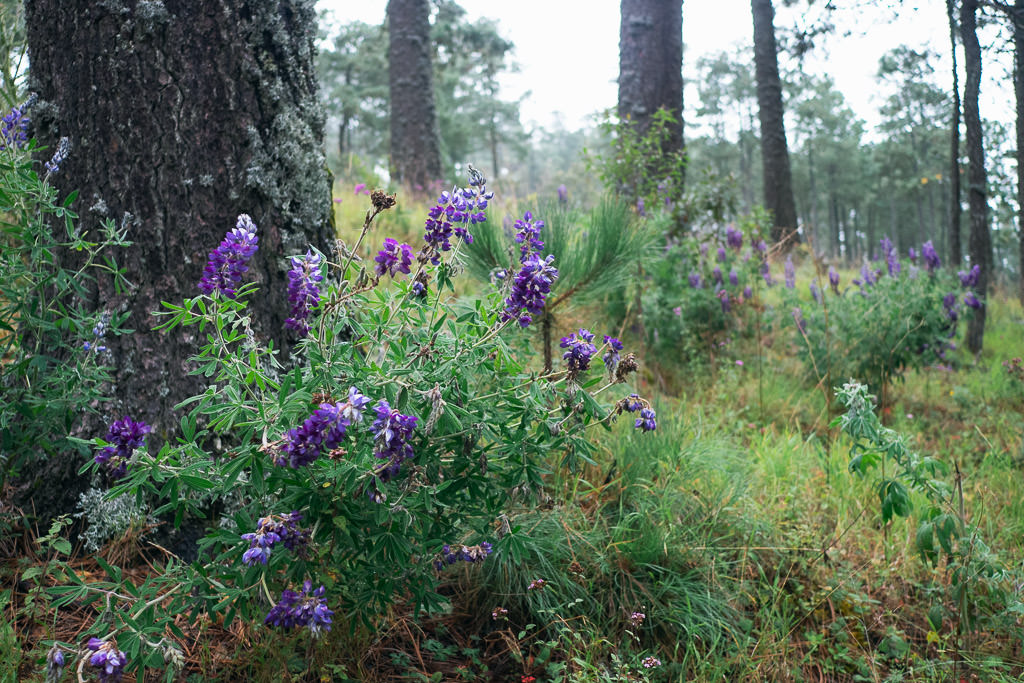
The villages here are very friendly and inviting, and I consider the Sierra Norte highly underrated! This guided mountain hike takes you through Sierra Norte highlands, where you’ll explore cloud forests, visit an indigenous village, and enjoy traditional mountain meals along the way.
Día de los Muertos (aka Day of the Dead)
Pro travel tip (from experience): book your trip far, faaaar in advance!
One of the biggest festivities in the year is Día de los Muertos which takes place at the end of October. In many ways it’s the best time to be in Oaxaca as the streets are filled with colorful parties and parades. However, visiting Oaxaca for Day of the Dead does not come without its challenges. I’ve been in Oaxaca during Day of the Dead twice, so let me share a few quick tips.
Travel guides often highlight Oaxaca as the best place in Mexico to witness the Day of the Dead festivities. This has now increased demand to such a level that you have to be very early to book your accommodation.
I thought 4 months in advance would still be early to book, but I found that 95%+ of the accommodation had already been reserved. I recommend booking many months ahead of time — consider 6 months to be sure.
No matter when you book, room rates will be much higher than the normal price, so be prepared to empty your wallet if you want to be in Oaxaca during this special time.
Friendly reminder: Being in Oaxaca as a guest, be sure to respect the graveyards. These are meaningful spaces for local families, so give them room to honor their traditions in peace. Opening hours vary by cemetery and are usually posted on banners at the entrance.
 You can see the colorful decorations everywhere
You can see the colorful decorations everywhere 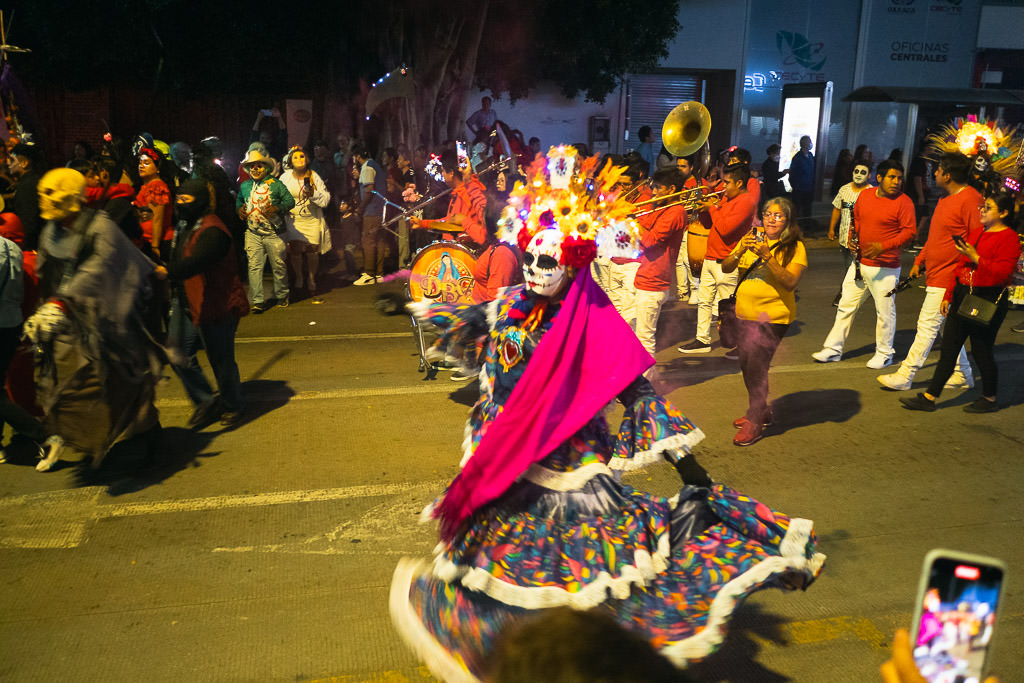 Parades take place on many different nights
Parades take place on many different nights 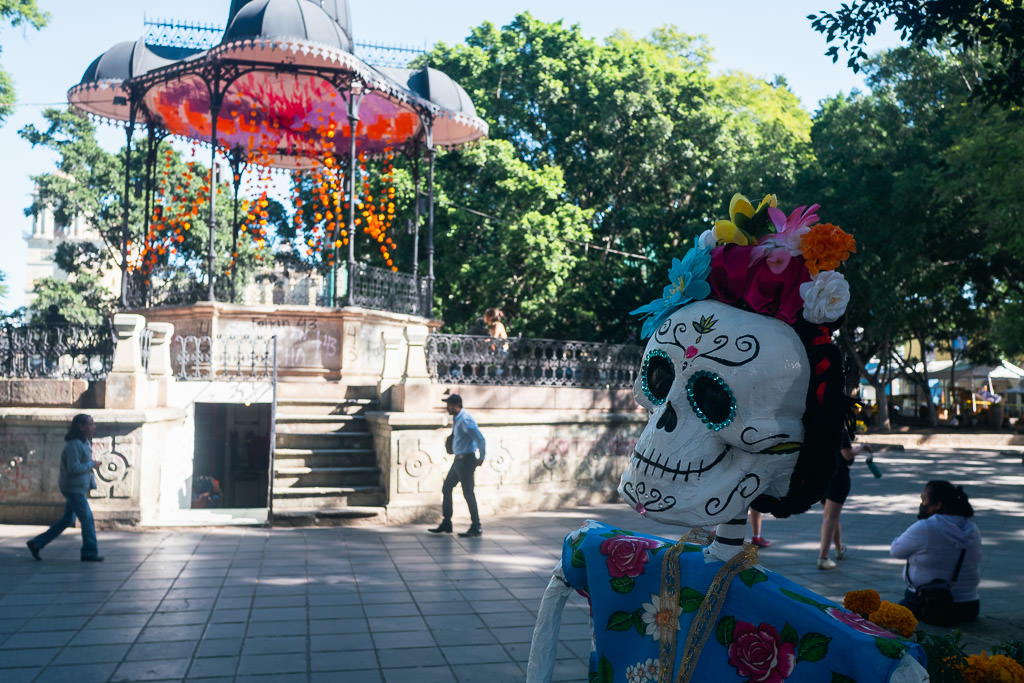 Feels like a scene from Coco—only this is real life
Feels like a scene from Coco—only this is real life 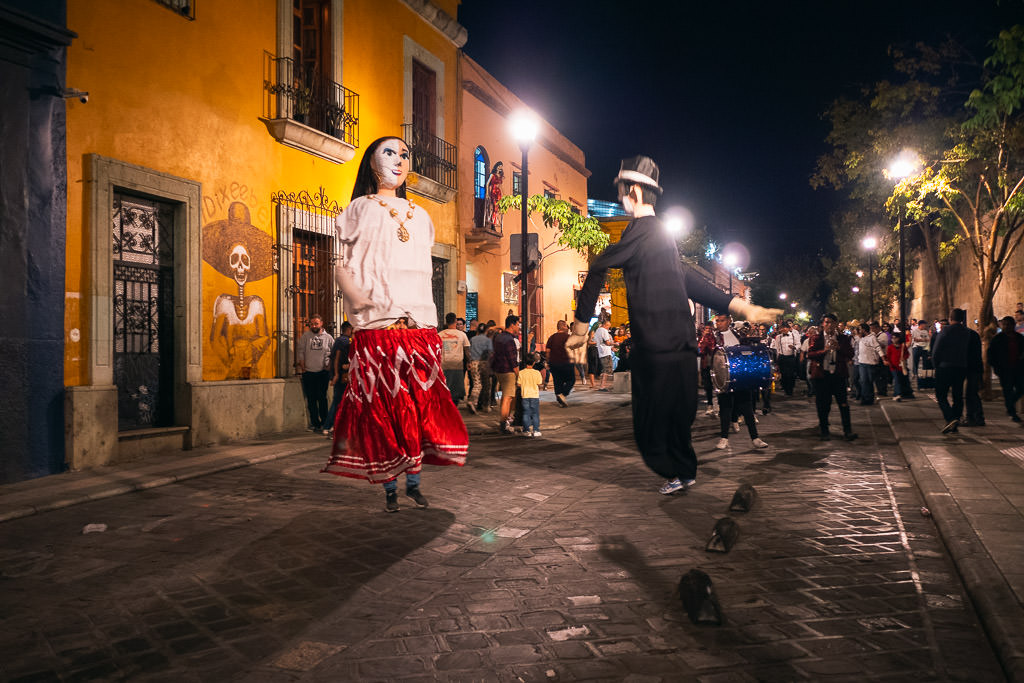 A beautiful blend of mournful and joyful
A beautiful blend of mournful and joyful
By the way, not everything centers around October 31! The celebrations are spread over many days. Although in English we say “Day of the Dead”, it’s really closer to a whole week. This does help to limit your FOMO when you’re in Oaxaca for the festivities, as there isn’t just “one” parade you could miss.
That said, Day of the Dead celebrations can be witnessed all over Mexico. If you’re too late to book in Oaxaca, don’t despair! You can consider many other places, some of which offer a more intimate experience. Nowadays, Mexico City also has a huge Día de los Muertos parade, and this metropolis is much less likely to run out of accommodation.

What’s next on the map after Oaxaca
There’s so much more to discover beyond Oaxaca. If you have time to keep exploring, here are some top destinations to consider with their highlights—ranked in my personal favorite order
The Oaxacan Coast (beach & surf) – Hit the beaches at Puerto Escondido or Mazunte for surf and sea turtles
San Cristobal de las Casas (mountains) – Get a taste of indigenous culture in the cool Chiapas highlands
Palenque (ancient ruins) – Go hunt ancient Mayan ruins hidden in the jungle
Yucatan Peninsula (beaches & nature) – Check out cenotes, colonial cities like Merida, and world-famous sites like Chichen Itza
Please visit:
Our Sponsor
